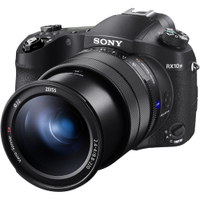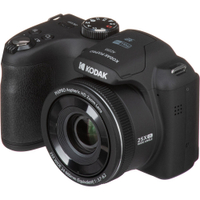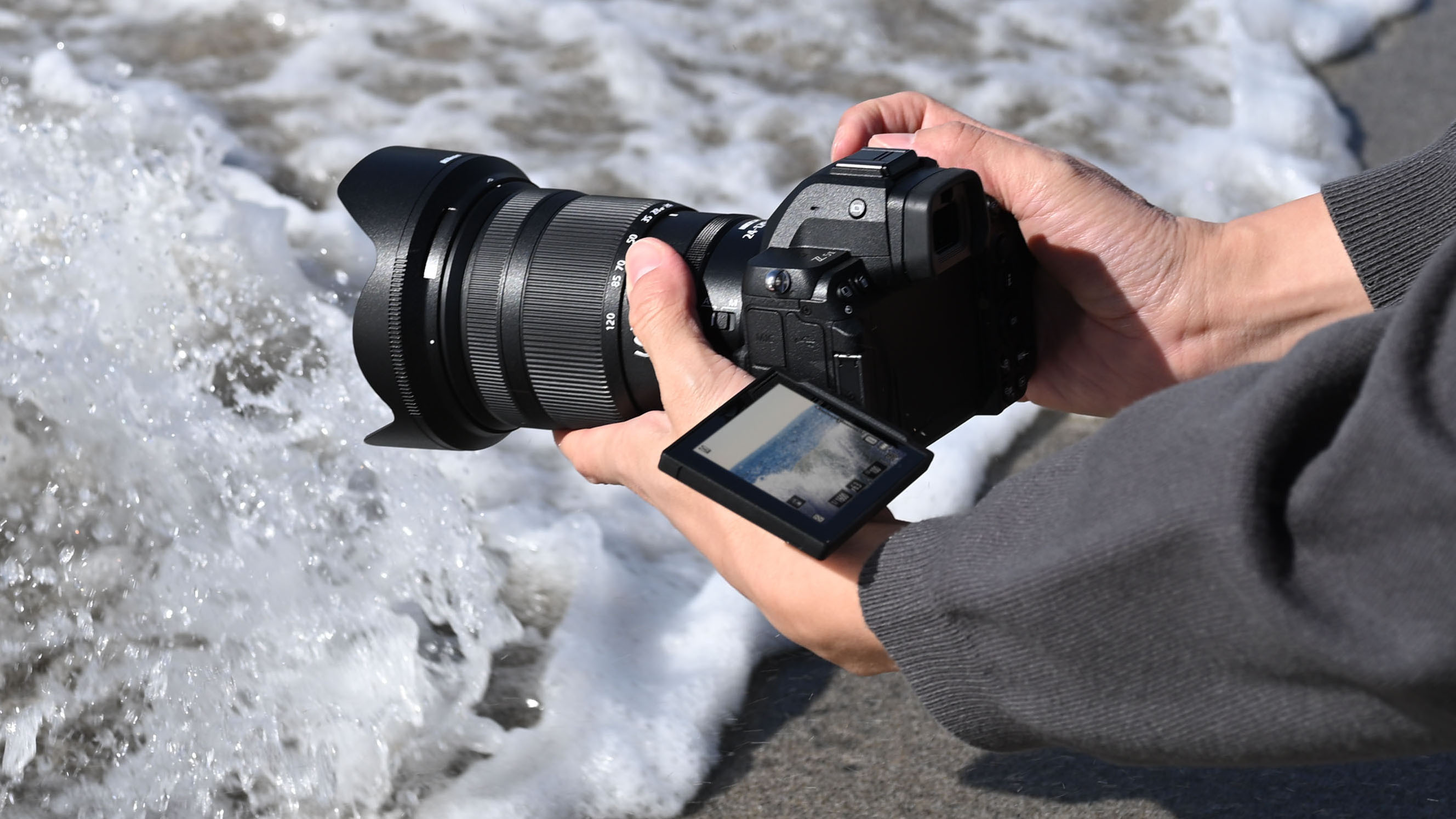Digital Camera World Verdict
I remember dabbling with bridge cameras more than 20 years ago. At the time, they seemed too good to be true – compact digital cameras that felt like ‘proper’ SLRs, with a mega zoom range in their fixed lenses. But even then, image quality was compromised and I feel the same way about this latest Panasonic offering.
Pros
- +
Monster 60x optical zoom range
- +
Decent features and functions
- +
4K UHD video capture
- +
Assured handling
Cons
- -
Lackluster image quality
- -
Necessarily chunky design
- -
Limited battery life
Why you can trust Digital Camera World
Panasonic needs no introduction as a photographic manufacturer, or indeed as a maker of anything and everything from hairdryers to microwave ovens, televisions, computers and more besides. But in the digital camera solar system of Panasonic’s wider electronics galaxy, I feel they’re best known for their high-performance Micro Four Thirds Lumix cameras and lenses, along with the newer Lumix S system full-frame fancies.
Bridge cameras are a bit more out on the fringe, a kind of fully-grown, chunky body but with the compact camera ethos of having a built-in rather than interchangeable lens. And typically, the Lumix FZ80D (USA) or FZ82D (Europe) has the kind of integral mega-zoom lens that defines the breed, in this case with a humungous 60x optical zoom range. As such, it vies for a place as one of the best bridge cameras in today’s marketplace.
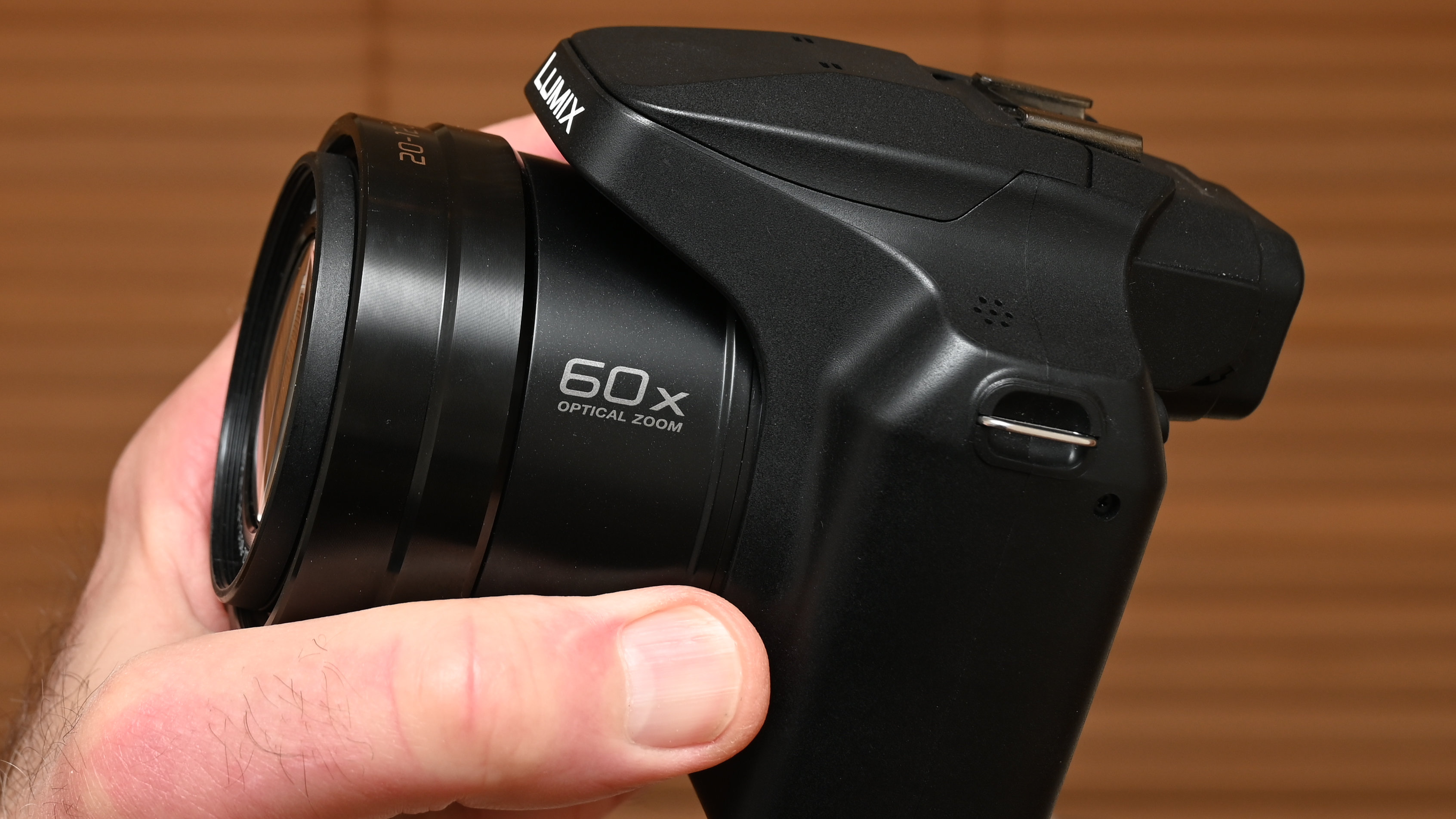
Panasonic Lumix FZ80D / FZ82D: Specifications
| Sensor | 18.1 megapixels. 1/2.3-inch MOS |
| Sensitivity range | ISO 80-3200 (6400 extended) |
| Lens | 20-1200mm equivalent (60x optical zoom) |
| Rear screen | 3-inch fixed touchscreen LCD, 1.84 million dots |
| Viewfinder | OLED 2.36 million dots, 100% field of view |
| Battery life | 240 shots EVF, 330 shots LCD |
| Dimensions | 5.13 x 3.71 x 4.93" / 13.03 x 9.42 x 12.52cm |
| Weight | 1.41lb / 640g (inc battery, memory card) |
Panasonic Lumix FZ80D / FZ82D: Price
There’s no such thing as a free lunch, as the saying goes. Sold as the Panasonic Lumix FZ80D in the USA and the FZ82D in Europe, the camera comes at a price of around $477/£429. That seems almost too good to be true.
For comparison, the Nikon Z 28-400mm f/4-8 VR ‘superzoom’ costs way more at $1,297/£1,399, and for just the lens with no camera attached. And it only has a ‘paltry’ 14x zoom range compared with the humungous 60x zoom range of the Panasonic.
On the face of it, the Panasonic looks a bargain but as it turns out, there really is no such thing as a free lunch. As a ‘bridge camera’, image quality is compromised by design, as I’ll come to next, and there are cheaper, albeit more basic alternatives on the market, like the Kodak PixPro AZ255, which only costs around $137/£179.
Panasonic Lumix FZ80D / FZ82D: Design & Handling
I’m gonna go for another cliché. You can’t fit a quart into a pint pot. The lens fixed to the front of this camera has a whopping 60x zoom range, equivalent to using a 20-1200mm lens on a full-frame camera. Just try to picture that, if you can. A 20-1200mm full-frame zoom would be so big and heavy that you’d have trouble lifting it off the ground and would probably need a wheelbarrow to carry it around.
By contrast, the lens on the FZ80D/FZ82D complete with camera weighs in at just 1.41lb (640g), and that’s also including the battery and a memory card. Sure, the lens physically extends at longer zoom settings (and a little bit at the most wide-angle setting) but the camera and its fixed lens measure just 5.13x3.71x4.93" (13.03x9.42x12.52cm).
The seemingly impossible is achieved by the inclusion of a typically tiny 1/2.3-inch MOS image sensor, featured in many bridge cameras. It has 18.1 megapixels on tap but is physically smaller than the sensors used in most mobile phones these days. It’s the only way of getting such a big zoom range while keeping the camera and lens to a manageable size.
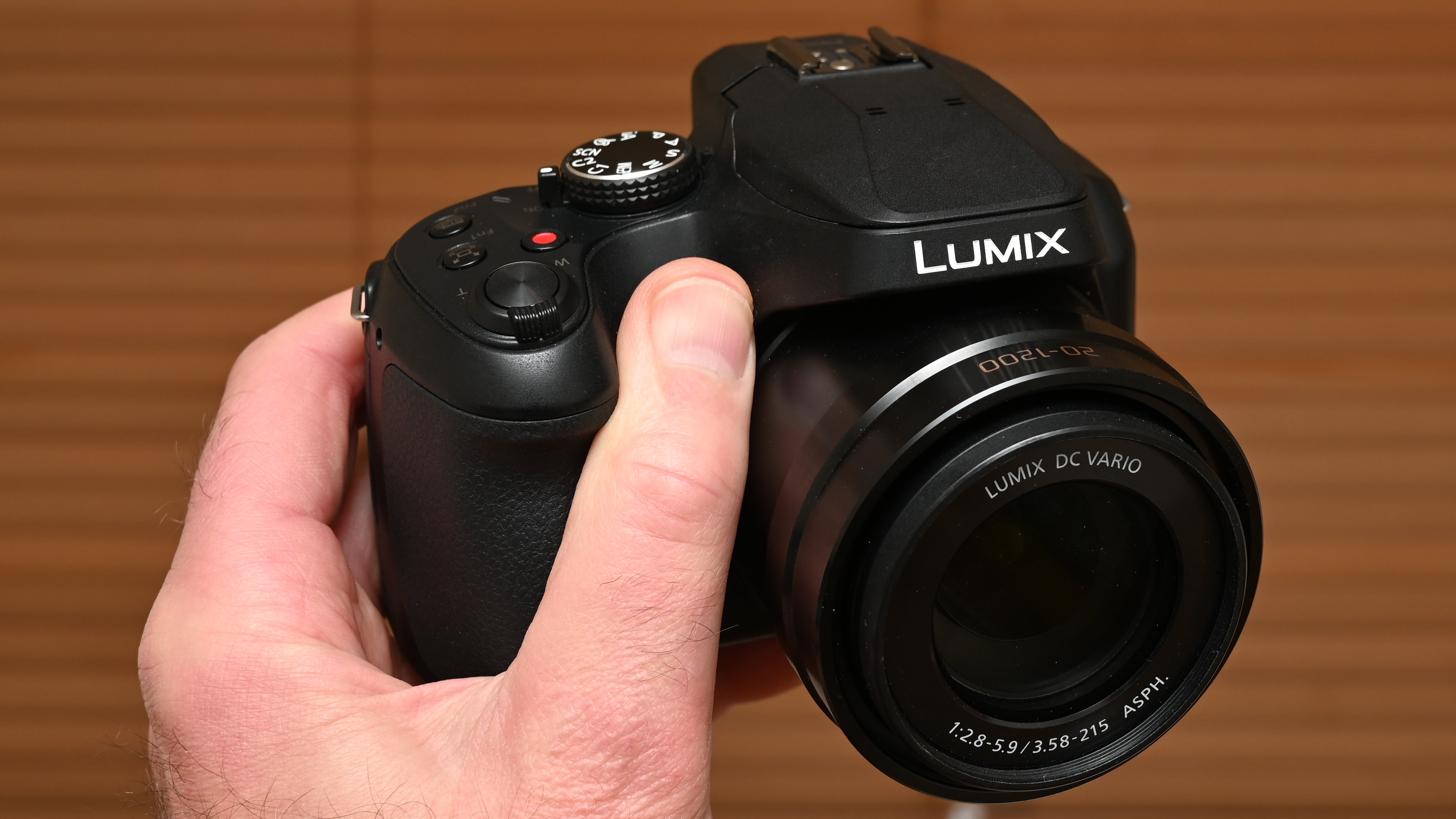
Like other bridge cameras, the design isn’t particularly compact and the Panasonic has a chunky feel to it. Indeed, it feels like a ‘proper’ camera. Up on top, there’s a shooting mode dial with ‘intelligent’ Auto and PASM modes, plus a generous range of Scene and Effects modes, and even two Custom user settings. You also get two Function buttons, a video record button, zoom lever for the motorized zoom mechanism and a shutter release button. In a nutshell, there’s everything up top that you’d expect to find on this grade of camera.
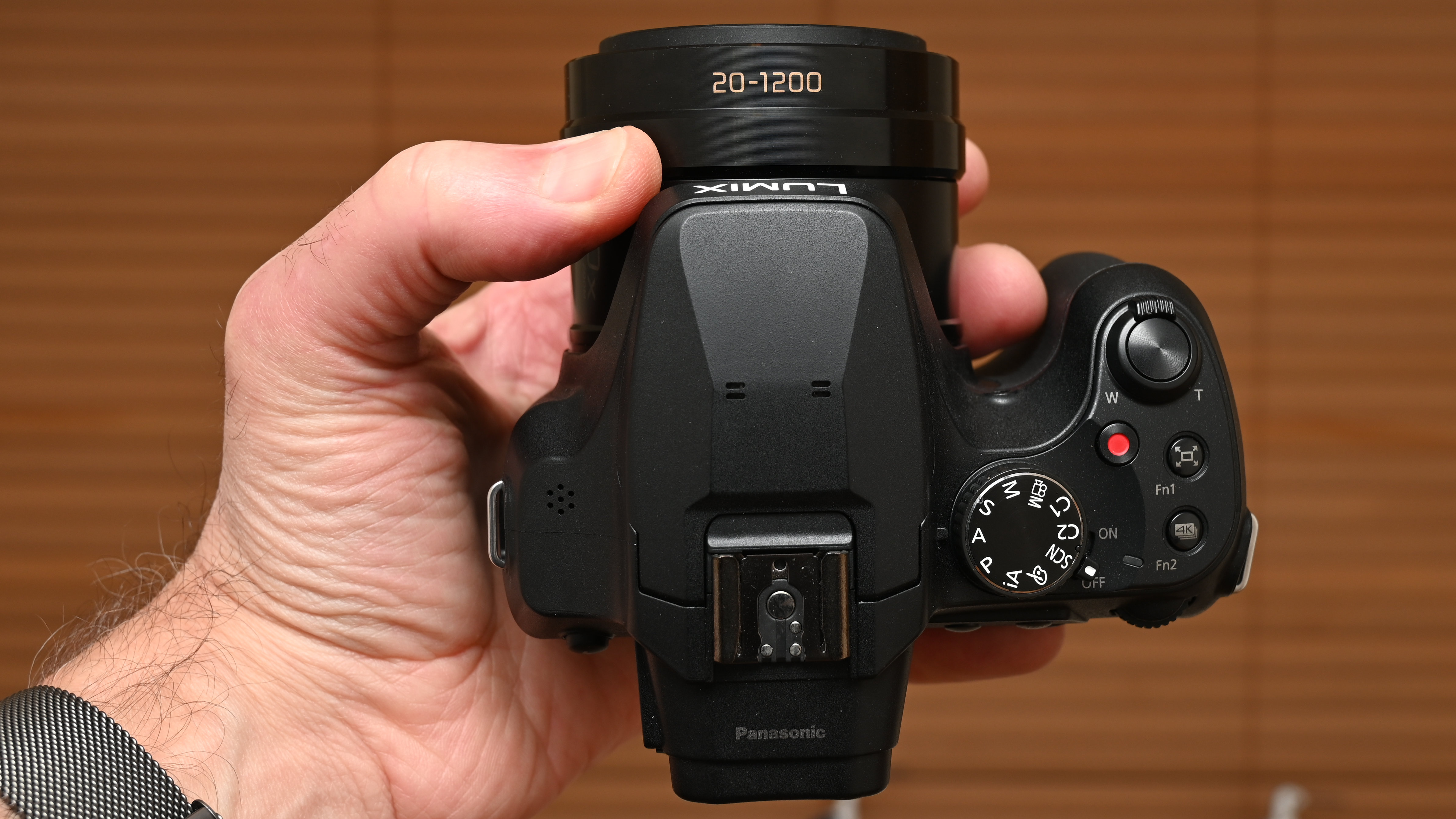
Moving around to the rear of the camera, there’s again a typical selection of buttons and dials to play with. These include the time-honored 4-way pad with a Set button at its center, and a rotary dial up towards the top. It all makes for fairly quick access to important shooting settings, along with intuitive adjustments. I like that the camera features an electronic viewfinder as well as a rear screen. I’m less keen that you have to press a button to swap between the two, rather than the camera sensing your proximity to the viewfinder and making the change automatically. Similarly, I like that the rear screen is a touchscreen but am less enamored that it has no tilt or vari-angle facility.
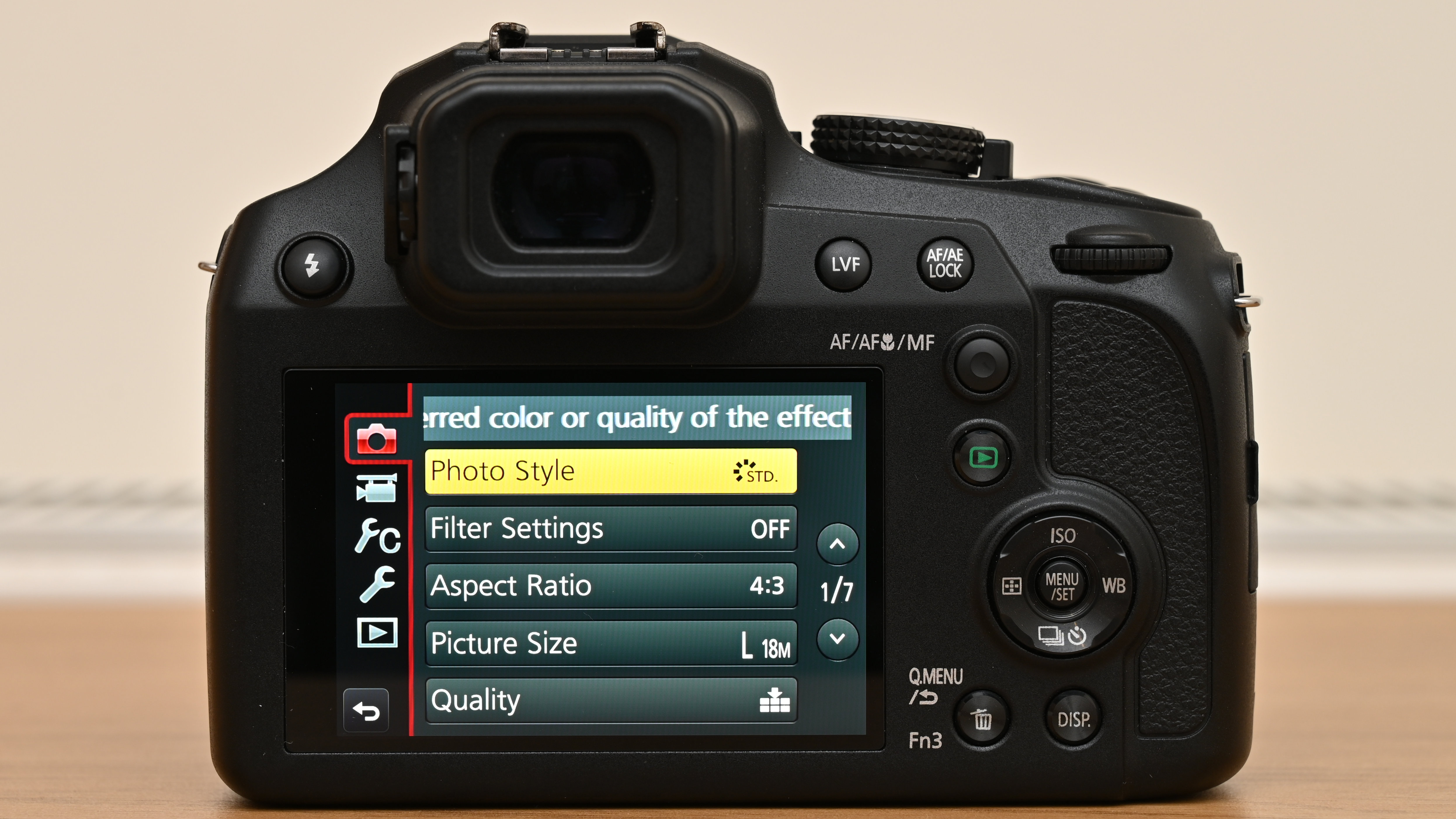
Not just for stills, the camera can shoot video at up to 4K UHD 30p, for as much as 15 minutes. There’re also a 4K photo mode, accessible via a function button on the top panel. Trick modes include ‘post focus’, based on taking a rapid-fire sequence of stills throughout which the focus distance is automatically shifted, so you can choose the ideal shot from the results. There’s also a facility for extracting 8MP still images from a 4K movie clip.
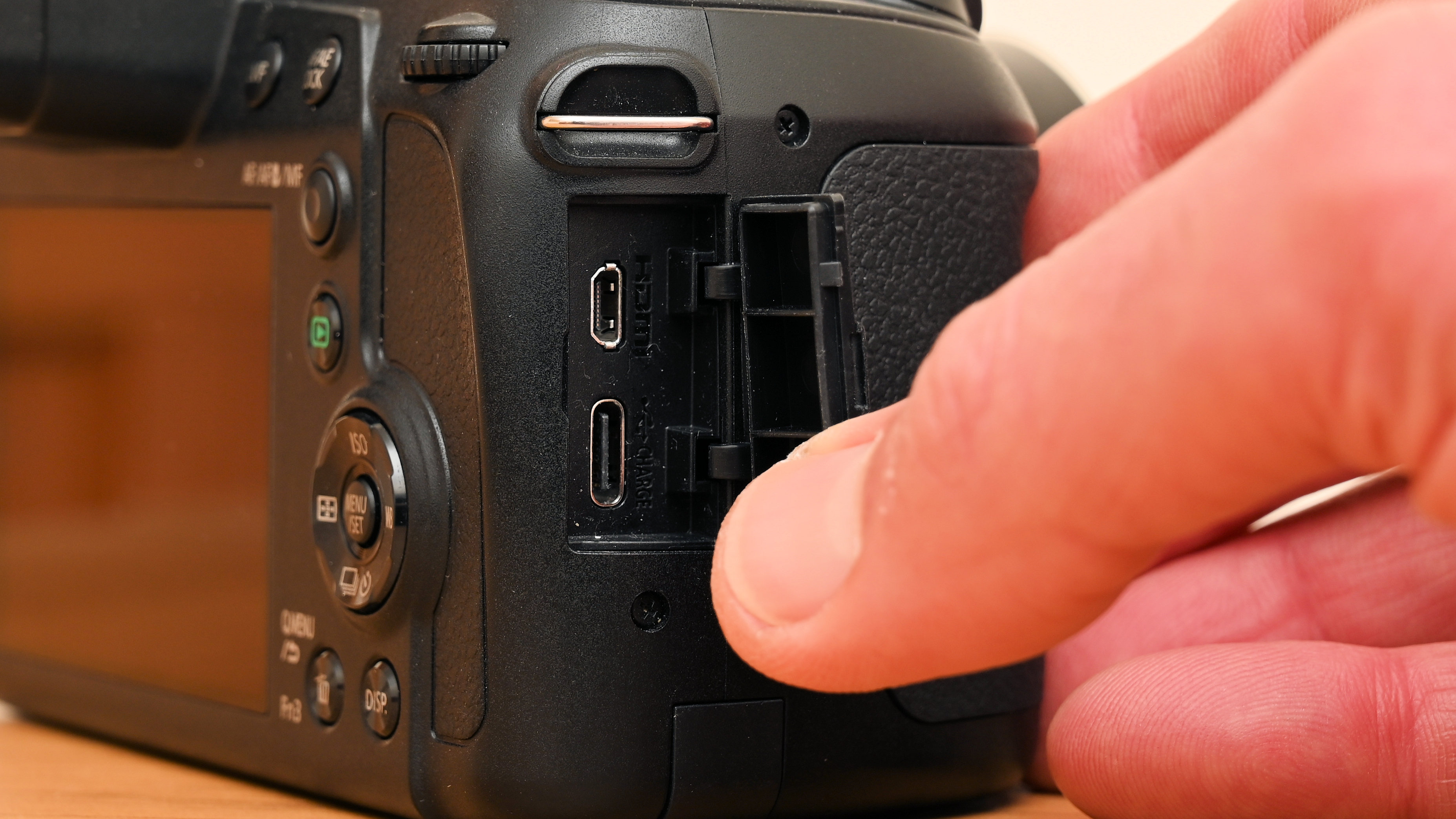
Notable updates over the previous version of the camera (without the ‘D’) are that the rear LCD and viewfinder both have higher resolutions. The FZ80D/82D also ushers in a USB-C socket which can be used for charging the camera’s Li-ion battery pack as well as for transferring stills and video clips. Indeed, the camera lacks Wi-Fi or Bluetooth connectivity, so wireless transfer is off the menu. There’s also an HDMI socket for video output. Battery life is pretty modest, rated at 240 shots when using the electronic viewfinder, rising to 330 shots based on using the rear screen.
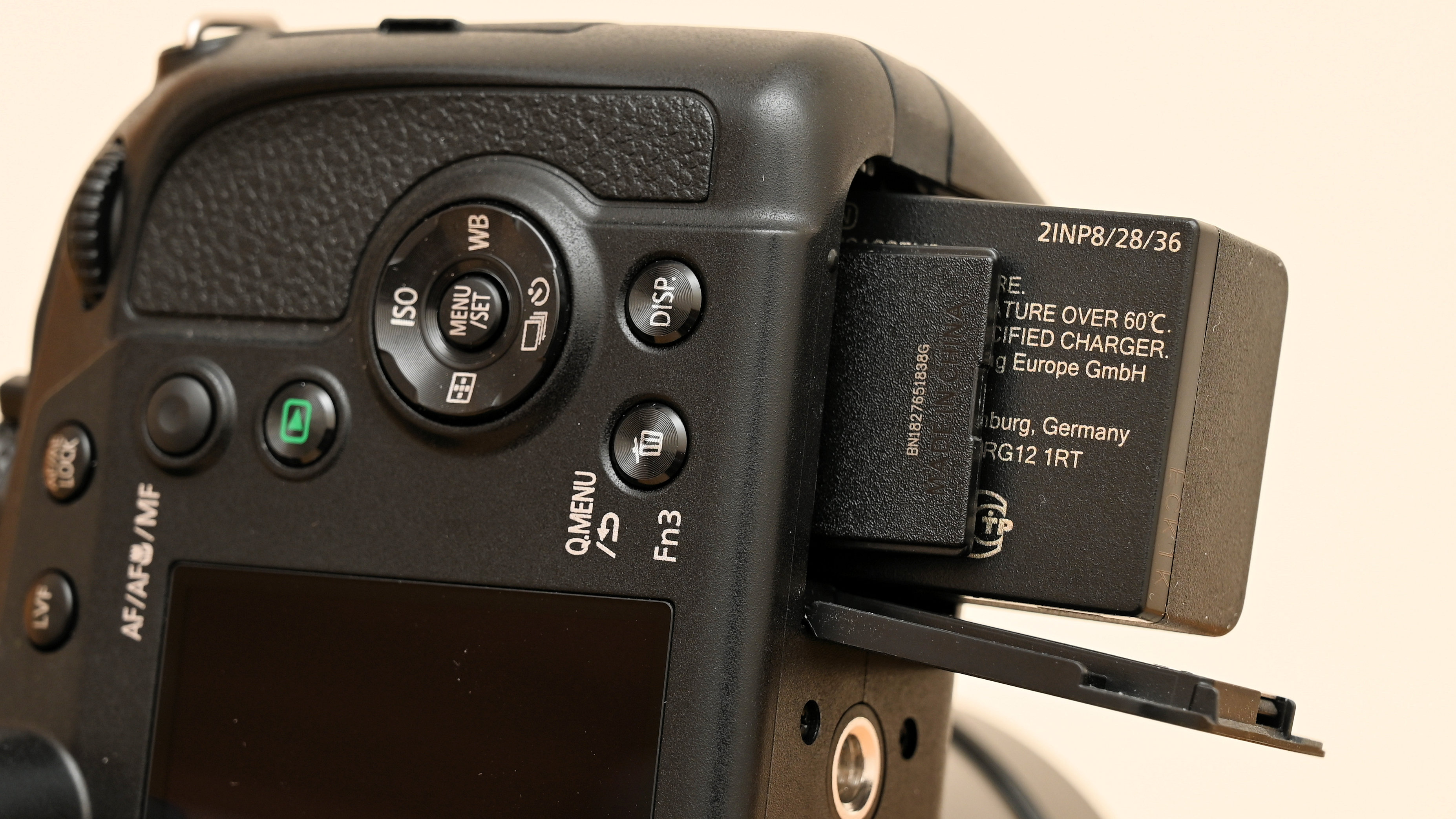
Moving from the bottom of the camera back up to the top, there’s a pop-up flash module. Dual stereo microphones are built into the lid of the pop-up flash and, to raise it, you simply press the Flash button on the rear left of the camera. I like that the Panasonic also features a proper hot-shoe for use with dedicated flashguns, rather than relying solely on the typically low-powered pop-up flash.
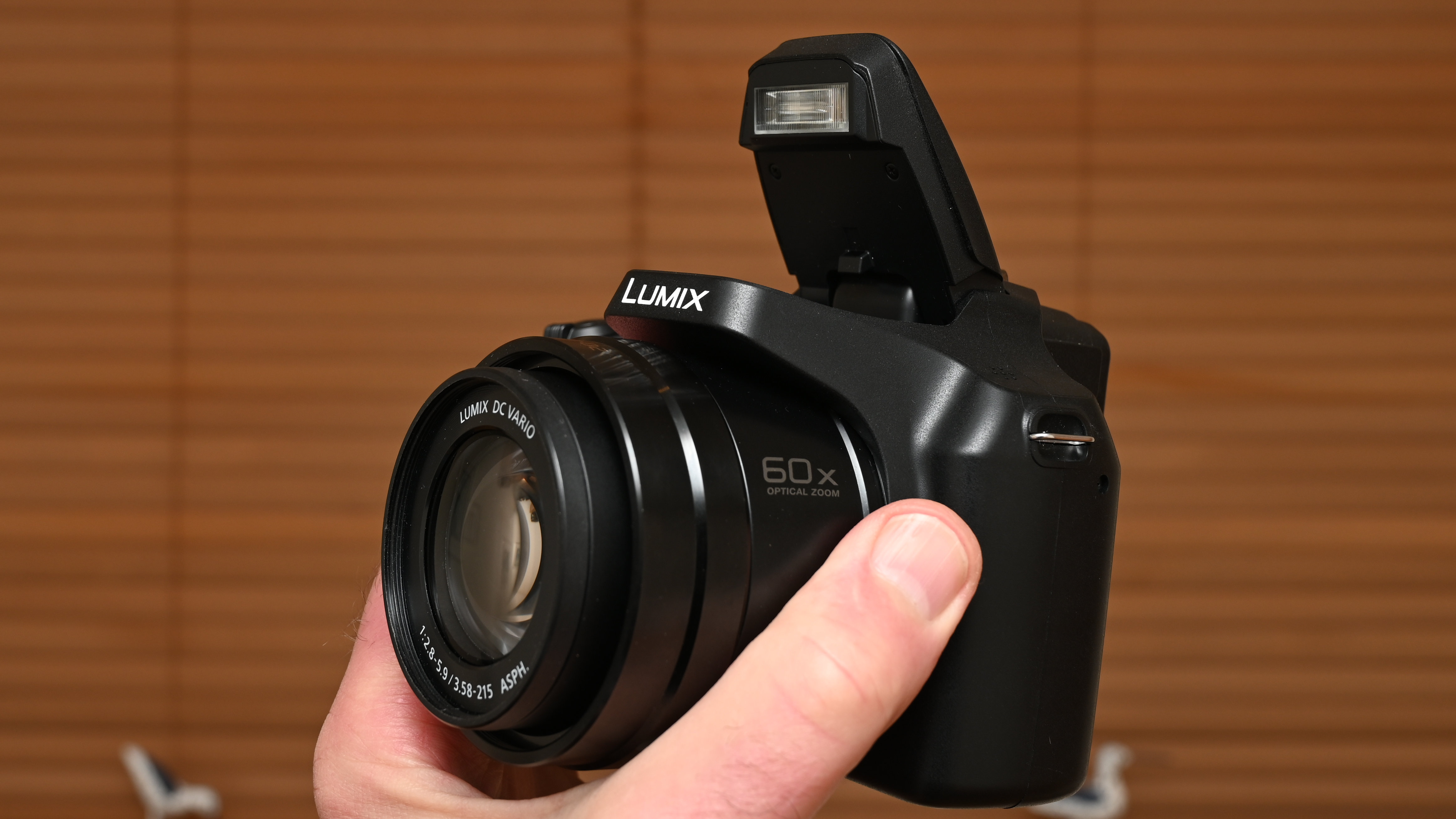
Panasonic Lumix FZ80D / FZ82D: Performance
I love the monster zoom range, which you can double up with ‘digital zoom’, although I wouldn’t go there for the following reason. The Achilles heel of the Panasonic is its image quality, which is governed by the physically small size of its 18.1MP 1/2.3-inch MOS sensor. Even towards the low end of its ISO 80-6400 sensitivity range, images tend to look grainy and lacking in resolution. Push the ISO setting to higher values and things go downhill pretty rapidly.
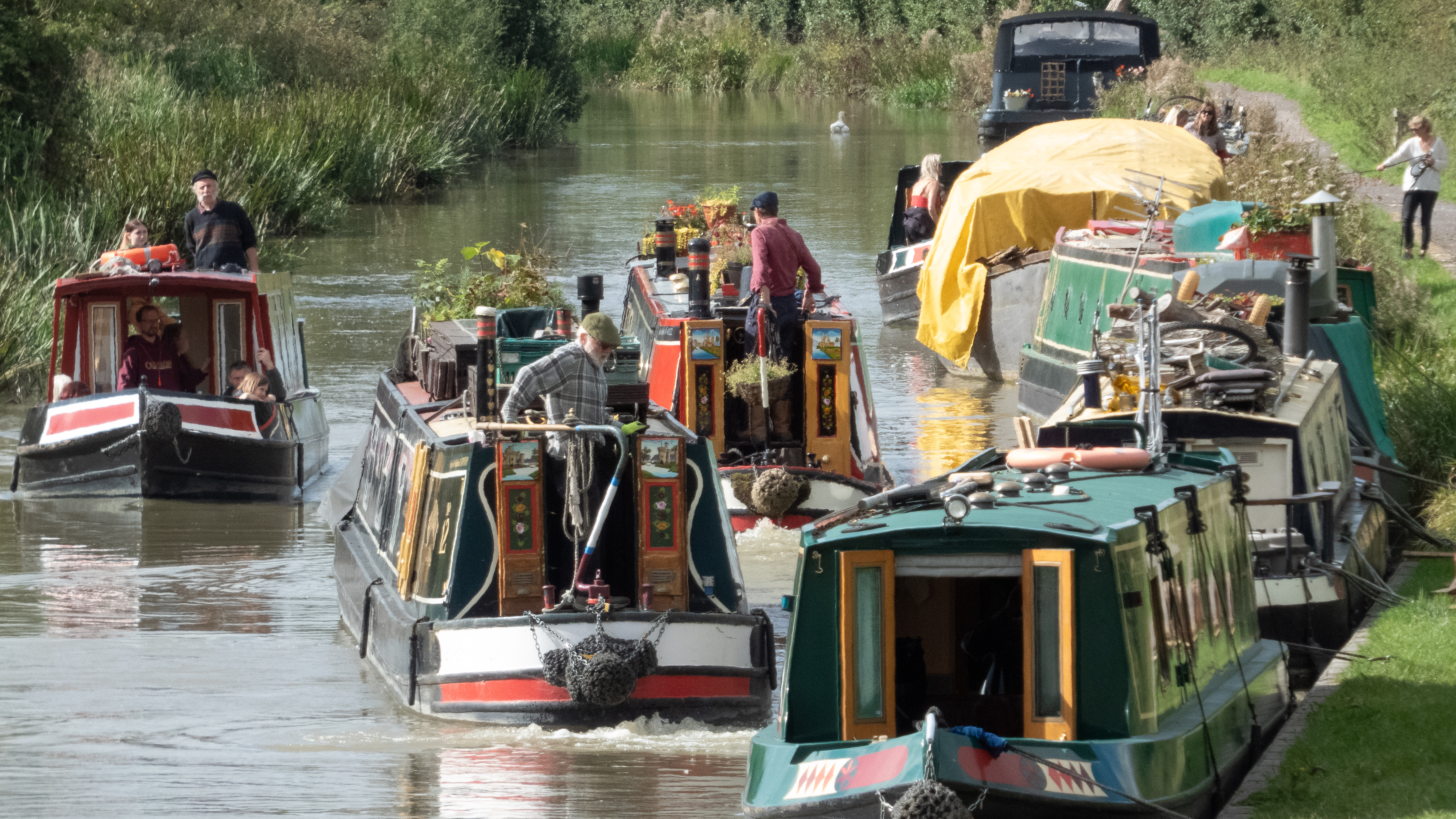
On the plus side, there are some high points to the camera’s performance. It can shoot stills in both RAW and JPEG modes and, as I’ve mentioned, 4K UHD movie capture is available. Back in stills mode, shutter speeds of 1/2000th to 4 seconds are available with the mechanical shutter, rising to 1/16,000th to 1 second with the electronic shutter option. The burst rate for stills is also pretty swift, at up to 10 frames per second.

Exposure metering works well, and I found the camera gave consistently reliable results in all of its matrix, center-weighted and spot metering options. There’s also a good range of ‘photo styles’ on offer in the menu system, including the likes of standard, vivid, portrait, scenery, monochrome and more besides. As I’d expect, a live preview of the different styles is delivered on the rear screen and in the electronic viewfinder.


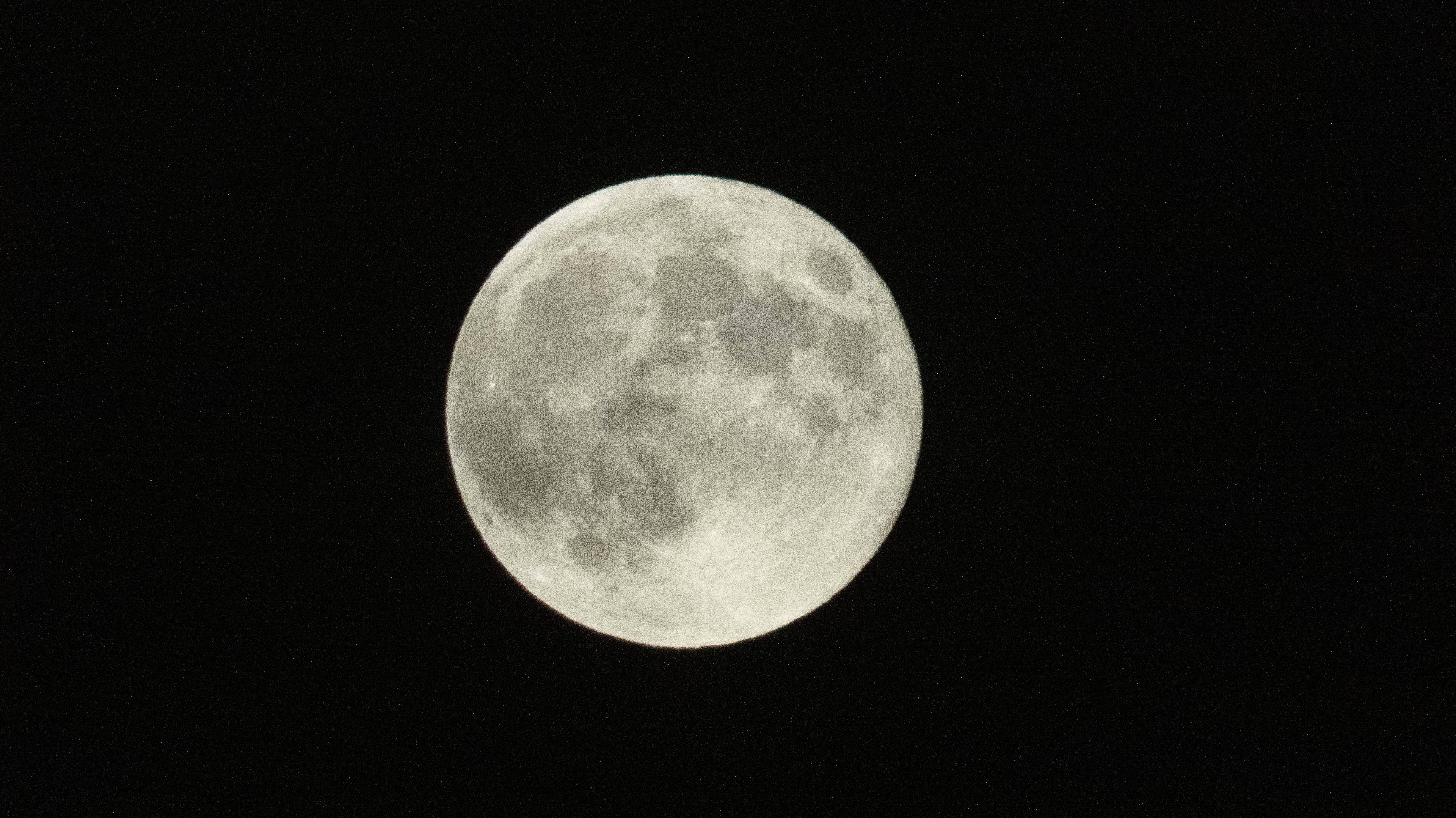

Panasonic Lumix FZ80D / FZ82D: Lab results
Historically we haven't tended to lab test bridge cameras, as they usually score badly. Consequently we don't have test data for many current bridge cameras with which to compare the FZ80D/FZ82D. The Sony RX10 IV is the closest rival we've lab tested, though it packs a larger image sensor. We've also tested the most outrageous bridge camera ever, the 125x Nikon P1000, however it's now been discontinued. We include it here for reference purposes. Finally, a Canon EOS R100 kit isn't too dissimilar in price to the FZ80D / FZ82D. Save up for a telephoto lens in future and you could get close to the Panasonic's versatility, but with a far larger APS-C image sensor and the promise of significantly better image quality.
Resolution (line widths/picture height):
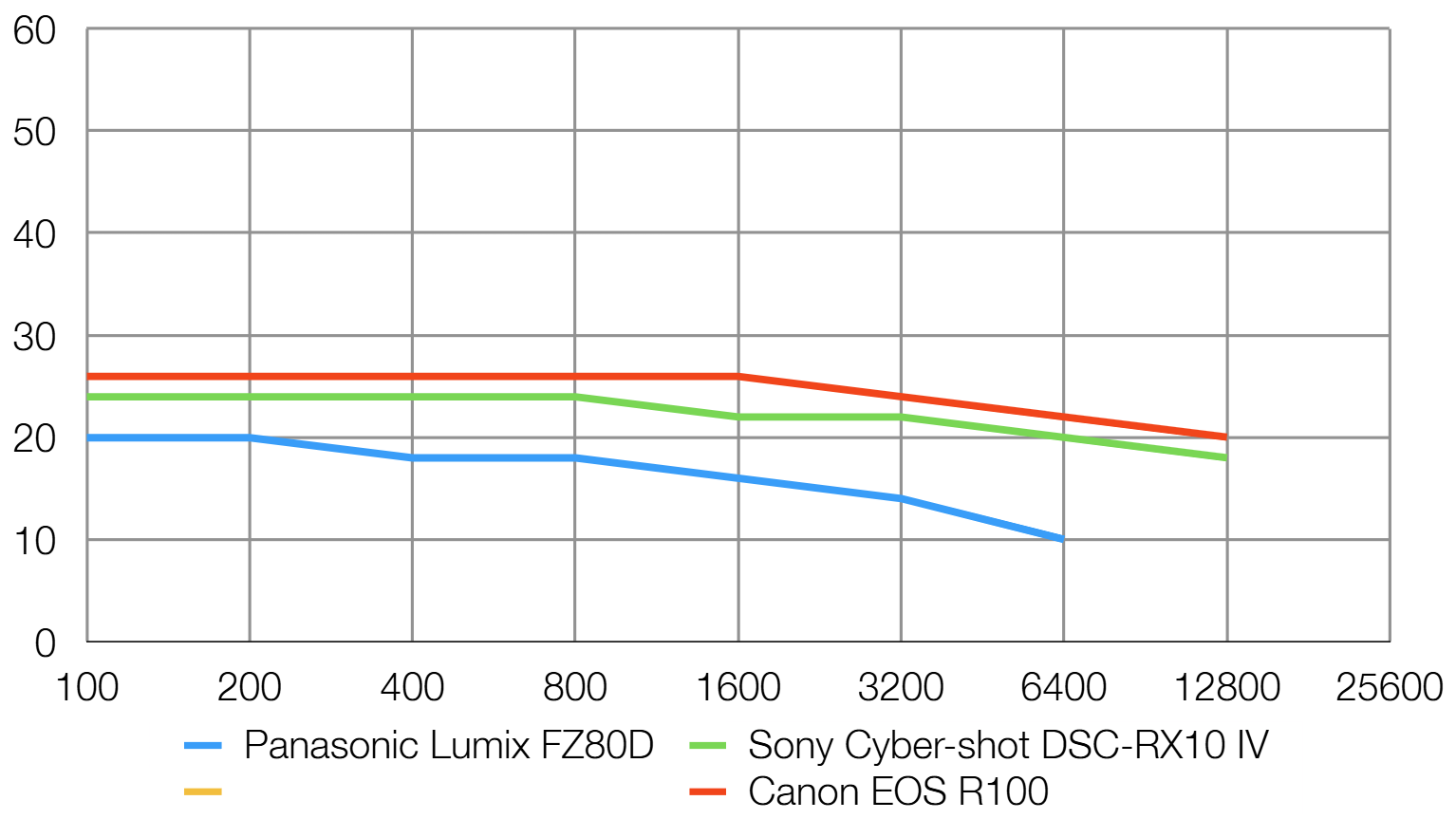
The Lumix FZ80D's combination of a (now) relatively low pixel count, combined with its physically small sensor, means it struggles to resolve fine detail. It's especially bad at higher ISOs, where its susceptibility to image noise means detail gets obscured. The Sony's resolution is only marginally higher than the Panasonic's, but because the RX10 IV's sensor is so much bigger, its images are cleaner and detail doesn't get corrupted by grain. The APS-C EOS R100 is better still, although surprisingly not by much. Unfortunately we don't have resolution scores for the Nikon P1000.
Dynamic range (EV):
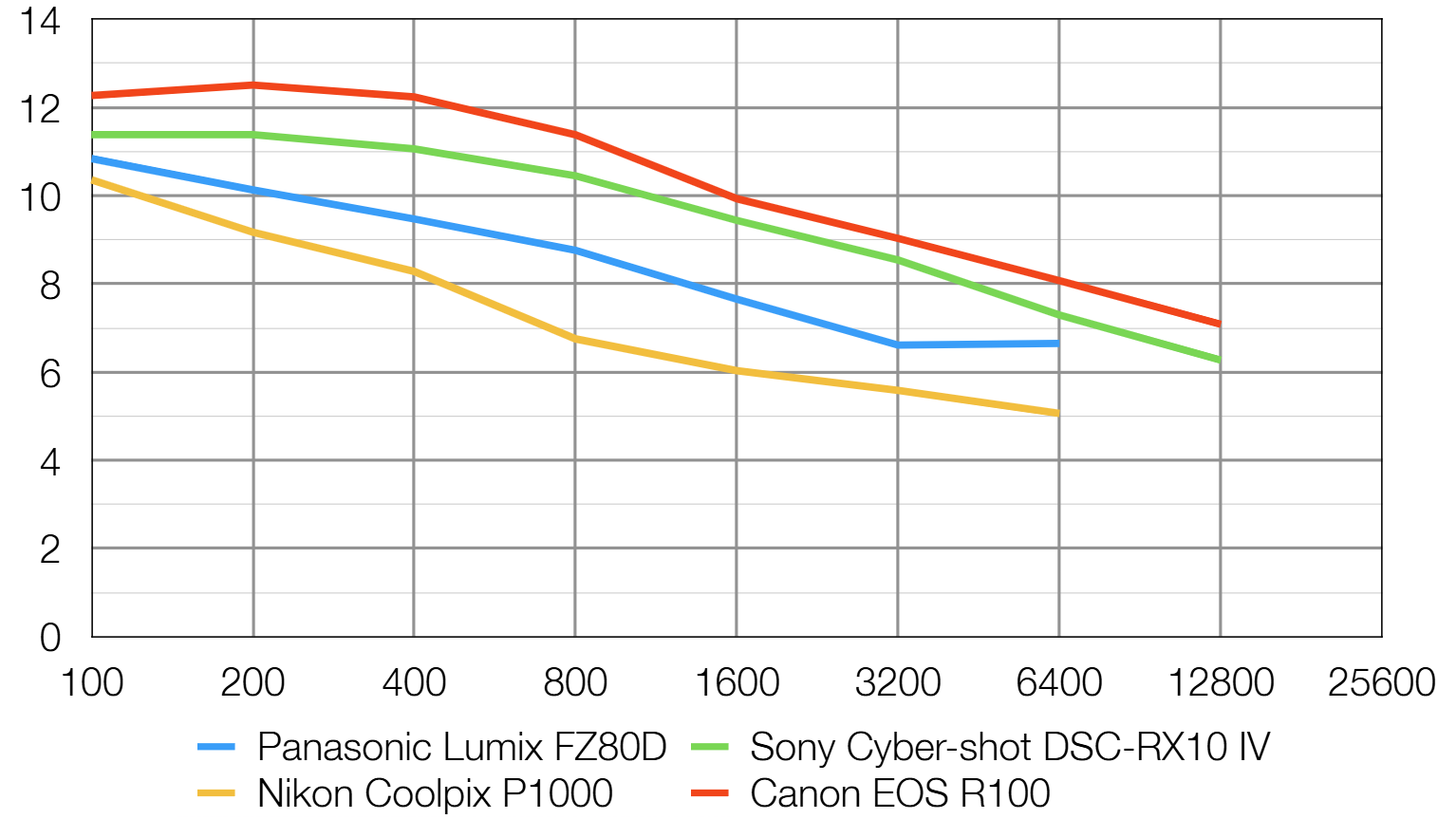
Dynamic range is a measure of a camera's ability to record extreme brightness ranges and still retain detail in the brightest and darkest parts of the scene. It's measured in EV (exposure values, or 'stops').
Inevitably with its small image sensor, the Panasonic isn't able to capture anything close to the amount of dynamic range that you'd get from the RX-10 IV or EOS R100. At least it puts in a noticeably better performance than the P1000, though.
Signal to noise ratio (decibels):
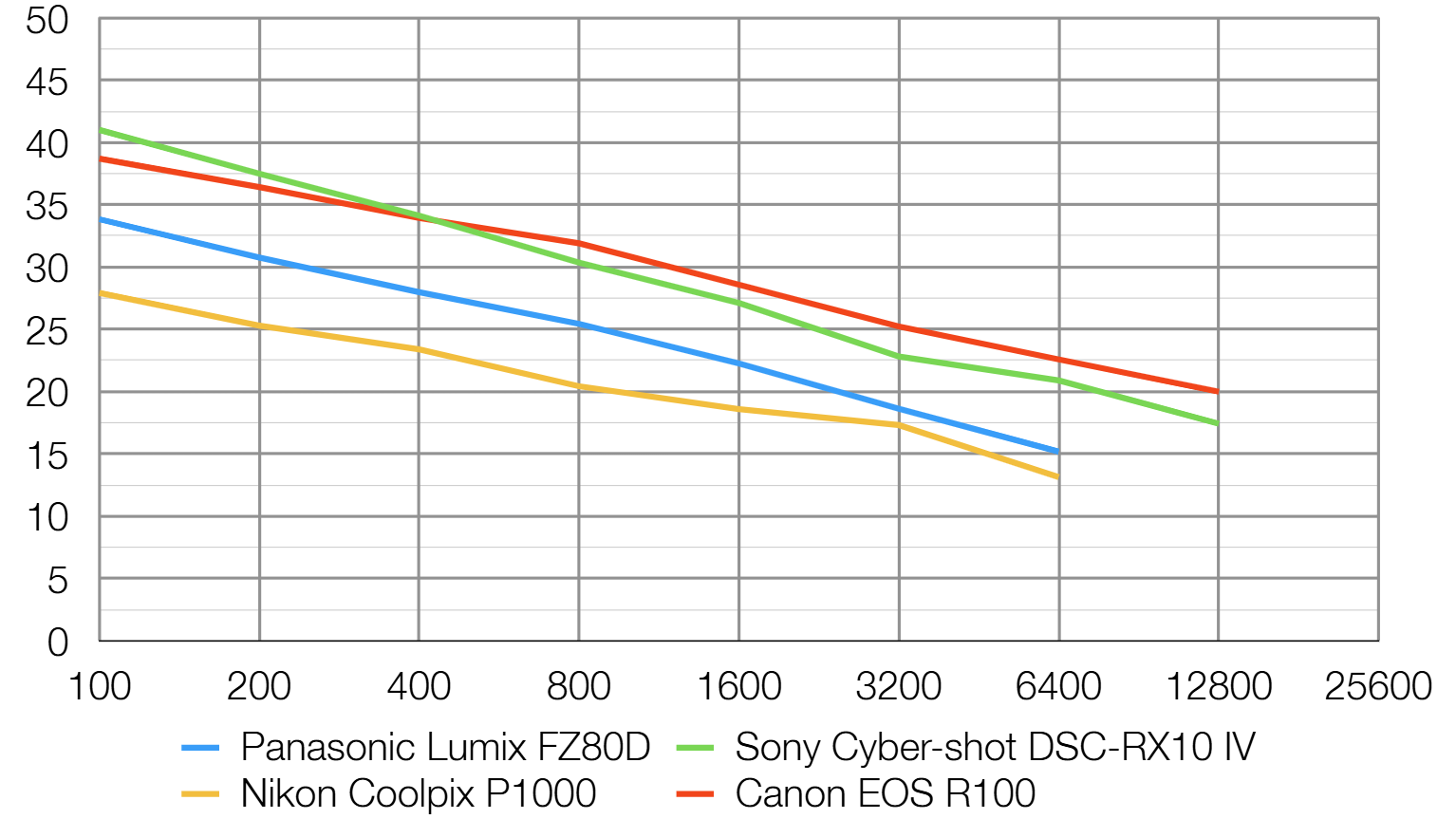
This test compares the amount of random noise generated by the camera at different ISO settings as a proportion of the actual image information (the 'signal'). Higher values are better and we expect to see the signal to ratio fall as the ISO is increased.
Small sensor cameras tend to struggle in this test, as their tiny sensors are more susceptible to producing noise. The Lumix FZ80D is no exception, though it does manage to produce cleaner images than the old Nikon P1000. The Sony and Canon cameras, with their much larger sensors, are in a league of their own.
Panasonic Lumix FZ80D / FZ82D: Verdict
I feel that the extravagant zoom range makes the Panasonic Lumix FZ80D / FZ82D a very versatile camera, its motorized zoom facility delivering everything from generous wide-angle coverage to ultra-telephoto potential. Other facets of performance are also good, from consistently accurate autofocus and metering to fast burst rates for stills and the availability of 4K UHD movie capture. But for me, the lack of outright image quality is this camera’s fatal flaw. Images tend to look grainy and lacking in resolution and, at the end of the day, I can get much better looking images from my mobile phone.
| Features | There’s a good range of features, including an electronic viewfinder and plentiful shooting options. | ★★★★☆ |
| Design | Most of the bases are covered but there’s no tilt/vari-angle rear screen, nor auto LCD/viewfinder switching. | ★★★★☆ |
| Performance | As a bridge camera, it certainly delivers on zoom range but image quality is pretty poor. | ★★☆☆☆ |
| Value | It’s not bad value on the whole but I’d expect better image quality for the money. | ★★★☆☆ |
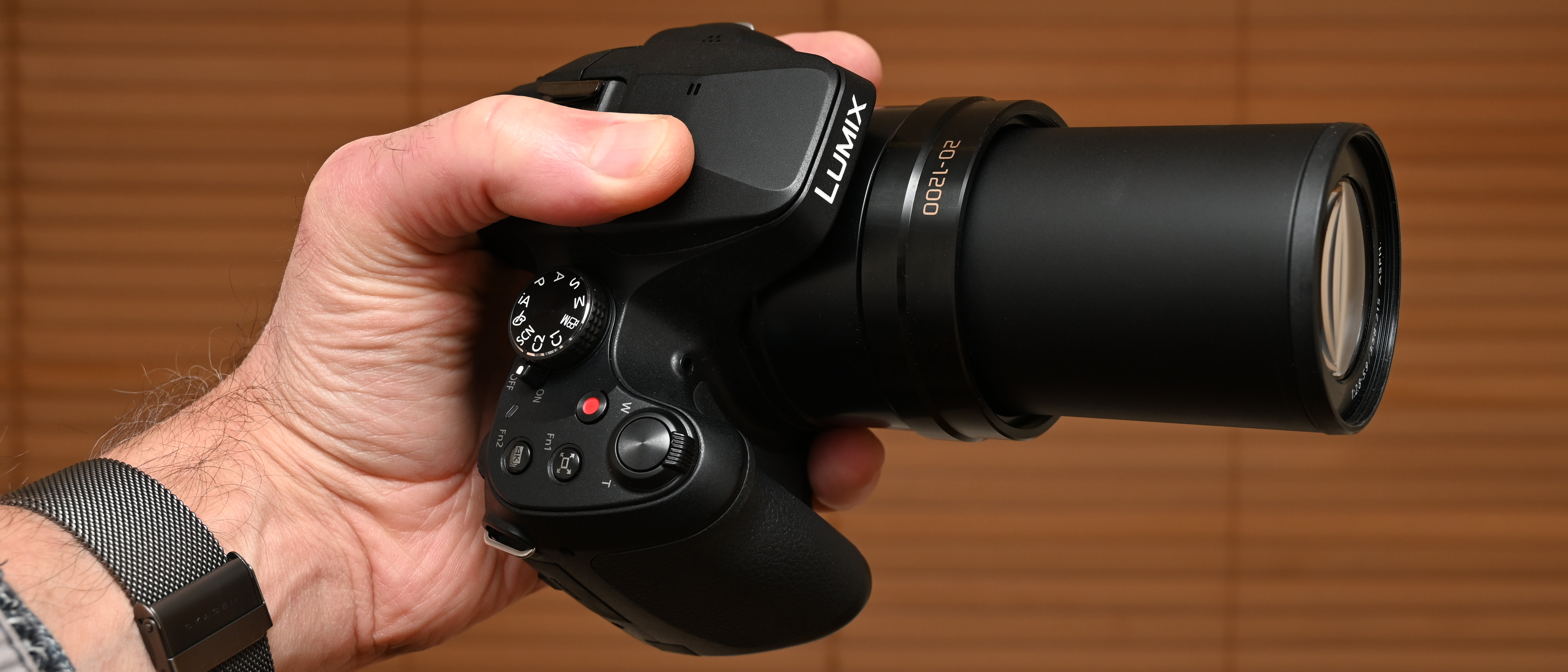
Should you buy the Panasonic Lumix FZ80D / FZ82D?
✅ Buy this...
- You want a camera with a built-in lens that delivers a huge zoom range, equivalent to 20-1200mm in full-frame terms.
- You’re after a bridge camera that features an electronic viewfinder, rather than relying on just a rear screen.
🚫 Don't buy this...
- You put image quality higher up on your ‘must have’ list than mega zoom range. Picture quality is frankly disappointing.
- You’d rather step up to a camera that has interchangeable lenses, so you can fit the right tool for the job without compromise.
Alternatives
The Sony Cyber-shot DSC-RX10 IV is a more up-market bridge camera with a bigger 20.1MP 1-inch BSI CMOS image sensor. It has a lesser 24-600mm effective zoom range and is comparatively expensive at around $1698/£1478.
Down in the bargain basement, the Kodak PixPro AZ255 only costs around $137/£179 to buy. It has the same 1/2.3-inch format of image sensor as the Panasonic but with a more restrictive effective zoom range of 24-600mm and no viewfinder, relying solely on the rear screen.
Matthew Richards is a photographer and journalist who has spent years using and reviewing all manner of photo gear. He is Digital Camera World's principal lens reviewer – and has tested more primes and zooms than most people have had hot dinners!
His expertise with equipment doesn’t end there, though. He is also an encyclopedia when it comes to all manner of cameras, camera holsters and bags, flashguns, tripods and heads, printers, papers and inks, and just about anything imaging-related.
In an earlier life he was a broadcast engineer at the BBC, as well as a former editor of PC Guide.
